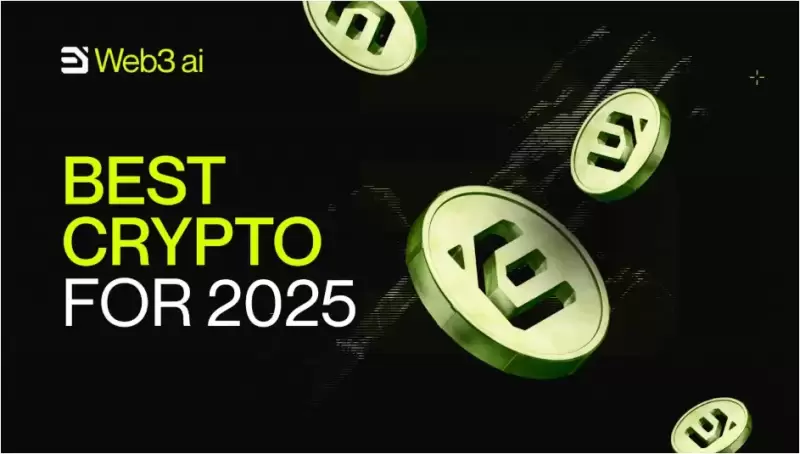 |
|
 |
|
 |
|
 |
|
 |
|
 |
|
 |
|
 |
|
 |
|
 |
|
 |
|
 |
|
 |
|
 |
|
 |
|
Defi今天的状态表明,Crypto在很大程度上耗尽了早期可寻址的市场 - 愿意通过

Introduction
介绍
The state of DeFi today suggests crypto has largely exhausted its early addressable market—serving the segment of users willing to interact with protocols directly through self-custodial wallets.
Defi今天的状态表明,Crypto在很大程度上耗尽了其早期可寻址的市场,从而使愿意通过自我监测的钱包直接与协议进行交互的用户部分。
Today, total value locked in DeFi sits at about $90B, down from over $180B in 2022, even with the circulating supply/market cap of stablecoins growing significantly.
如今,锁定Defi的总价值约为90B美元,低于2022年的180B美元以上,即使稳定的稳定的供应/市值显着增长。
DeFi’s inability to expand the pie and grow TVL can be attributed to three critical failures:
Defi无法扩展馅饼和成长TVL可以归因于三个关键失败:
* DeFi protocols have focused on building for other crypto users, not the broader 5B+ smartphone users who could be engaging with DeFi in the form of yield-bearing bonds, diversified portfolio trackers, or easily integrated DeFi derivatives.
* DEFI协议的重点是为其他加密用户建立构建,而不是更广泛的5B+智能手机用户,他们可能以承重债券,多元化的投资组合跟踪器或易于集成的Defi衍生品的形式与Defi互动。
* CeFi institutions have largely failed to integrate with DeFi in meaningful ways that would allow them to deploy their capital more efficiently and creatively.
* CEFI机构在很大程度上未能以有意义的方式与Defi集成,从而使他们能够更有效,更具创造力地部署资本。
* DeFi protocols have struggled to create products that are compelling to both technical and non-technical users, combining high yields with the ease of use that would attract a wider audience.
* DEFI协议一直在努力创建对技术用户和非技术用户都引人注目的产品,将高收益率与易于吸引更多受众的使用相结合。
DeFi and CeFi must converge and embrace one another to create undeniably better alternatives to TradFi products with more compelling yields and crypto flexibility, while being seamlessly integrated into apps real people use daily. This fusion would finally allow DeFi to expand beyond previous highs and achieve mainstream adoption.
Defi和CEFI必须相互融合和拥抱,以创建具有更引人注目的产量和加密灵活性的Tradfi产品的更好的替代品,同时无缝地集成到Apps真实的人每天使用。这种融合最终将使Defi能够超越以前的高点并实现主流采用。
In this report, I’ll outline why vaults, curators, and “DeFi mullets” may help DeFi cross the chasm, effectively ushering in what will later be seen as DeFi’s “ETF moment.”
在此报告中,我将概述为什么保险库,策展人和“ Defi Mullets”可能有助于Defi越过鸿沟,从而有效地迎来了后来被视为Defi的“ ETF时刻”的阶段。
Blackrock, Vanguard & State Street: The Original Curators
贝莱德,先锋街和州街:原始策展人
In the early ’90s, asset management was expensive, exclusive, and slow. Active mutual funds dominated the landscape despite charging high fees, being narrowly distributed through broker networks, and relying on brand rather than performance. While passive investing existed in the form of index mutual funds and institutional mandates, it was niche, clunky, and hard to access—requiring large minimums, no intraday trading, and limited distribution.
在90年代初期,资产管理昂贵,独家且缓慢。积极的共同基金尽管收取高额费用,通过经纪人网络狭窄分配,并依靠品牌而不是绩效,但积极的共同基金以景观为主导。尽管以指数共同基金和机构授权的形式存在被动投资,但它是利基市场,笨拙且难以访问的 - 要求大量最低限度,没有日内交易和有限的分配。
However, that all changed in 1993 when State Street launched SPY, the first U.S. ETF. For the first time, investors could buy the entire S&P 500 in a single, low-cost, liquid trade. Retail loved the access. Institutions loved the structure. Capital flooded in.
但是,这一切都在1993年街头街(State Street)推出间谍(美国ETF)Spy时发生了变化。投资者首次可以通过单个低成本的流动贸易购买整个标准普尔500指数。零售喜欢通道。机构喜欢这种结构。资本淹没了。
Since SPY’s launch, ETFs have gone from effectively zero to over $14T in AUM globally—including $10T in the U.S. alone—in just over 30 years. But the impact wasn’t just better packaging, ETFs fundamentally changed the economics of investing. They made market access cheaper, more efficient, and less reliant on intermediaries. Beta became commoditized, fees fell across the board, and distribution shifted from sales networks to self-directed platforms.
自间谍推出以来,全球AUM的ETF已在30多年的时间内从有效地从AUM中零增加到14吨以上的AUM(包括在美国仅在美国的$ 100T)。但是影响不仅仅是包装更好,ETF从根本上改变了投资的经济学。他们使市场访问更便宜,更高效,并且对中间人的依赖程度较低。 Beta成为商品化,费用全面下降,并且分销从销售网络转移到了自我指导的平台。
The firms that leaned in early—BlackRock, Vanguard, and State Street—now dominate, managing ~74% of all U.S. ETF assets.
早期倾斜的公司(Blackrock,Vanguard和State Street)现在占主导地位,管理约74%的美国ETF资产。
More recently, we in crypto have felt the ETF effect too.
最近,我们在加密货币中也感受到了ETF效应。
Since launching in January 2024, U.S. spot Bitcoin ETFs have attracted over $92B in AUM, now holding 5.3% of total BTC supply across 12 products. The largest, BlackRock’s iShares Bitcoin Trust (IBIT), alone holds 572K BTC—more than 2.7% of supply—with nearly $47B in assets.
自2024年1月推出以来,美国现货比特币ETF吸引了AUM的92B美元以上,现在占12种产品中BTC供应的5.3%。最大的是贝莱德的iShares比特币信托(IBIT),仅持有572K BTC(占供应量的2.7%以上),资产的资产近47B美元。
These ETFs didn’t generate new demand—they unlocked it, giving institutions a compliant, familiar wrapper to access BTC without touching native infrastructure.
这些ETF并未产生新的需求 - 它们解锁了,为机构提供了一个合规,熟悉的包装器,可以访问BTC而不触及本机基础架构。
DeFi’s ETF Moment
Defi的ETF时刻
If ETFs were the infrastructure breakthrough that allowed traditional asset managers to scale passive investing and attract trillions in capital, then vaults and curators are playing that same role in DeFi today – albeit at a much smaller scale. It’s still early.
如果ETF是基础设施的突破,使传统的资产经理可以扩展被动投资并吸引数万亿美元,那么金库和策展人在今天在Defi中扮演着相同的角色 - 尽管规模较小。还早。
Curators function like decentralized asset managers, but with some critical advantages: they’re non-custodial, liquid, and permissionless. Depositors don’t need to “hand over” their capital—they can enter or exit at will. And curator incentives scale directly with TVL.
策展人的功能像去中心化的资产管理人员,但具有一些关键的优势:它们是无限制的,液体的和无许可的。储户无需“移交”其资本,他们可以随意进入或退出。和策展人激励措施直接使用TVL扩展。
In many ways, this is asset management reimagined for the internet of value:
在许多方面,这是对价值互联网重新构想的资产管理:
* Like a mutual fund, a curator combines liquidity from multiple depositors to deploy into various protocols and strategies.
*像共同基金一样,策展人结合了多个存款人的流动性,以部署为各种方案和策略。
* Like an ETF, a curator’s vault is a liquid derivative that can be traded on centralized exchanges or DeFi protocols.
*像ETF一样,策展人的库是可以在集中式交换或FEFI协议上进行交易的液体衍生物。
* Plans are already underway to launch structured products (e.g., yield-bearing notes) backed by DeFi vaults, which could form the building blocks for broader capital deployment from institutions.
*已经在开发以Defi Vaults支持的结构化产品(例如,承重票据)的计划正在进行,这可能会构成机构中更广泛的资本部署的基础。
Top curators like Steakhouse and Gauntlet, for example, are already managing over $1B in TVL between them, each with their own strategies and product lines — from institutional-grade vaults to more
例如
免责声明:info@kdj.com
所提供的信息并非交易建议。根据本文提供的信息进行的任何投资,kdj.com不承担任何责任。加密货币具有高波动性,强烈建议您深入研究后,谨慎投资!
如您认为本网站上使用的内容侵犯了您的版权,请立即联系我们(info@kdj.com),我们将及时删除。
-

-

- 随着投资者检查宏观经济动态,比特币(BTC)越来越多地与黄金进行比较
- 2025-04-22 12:15:11
- 随着投资者检查宏观经济动态并转移全球货币情绪,比特币BTC/USD越来越多地与黄金进行比较。
-

- Web3 AI(WAI):2025年潜力最大的加密货币?
- 2025-04-22 12:10:12
- 在由炒作,时机和技术驱动的加密市场中,只有少数项目超越了噪音。如果您正在寻找2025年潜力最大的加密货币
-

-

-

-

-

-

- 特朗普在他的第二次就职典礼之前,自周五以来上涨了10%
- 2025-04-22 11:55:12
- 特朗普在他的第二次就职典礼之前,自周五以来上涨了10%,当时将有4000万个代币发行。



























































